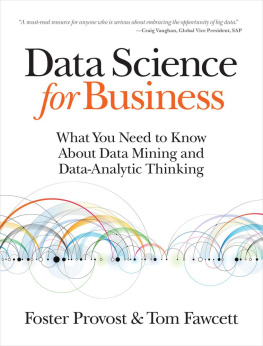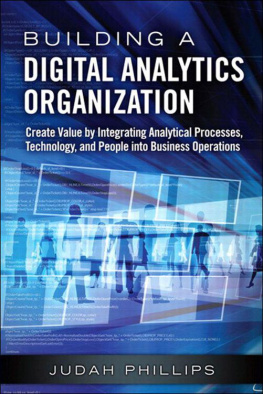Analytical Skills for AI and Data Science
by Daniel Vaughan
Copyright 2020 Daniel Vaughan. All rights reserved.
Printed in the United States of America.
Published by OReilly Media, Inc. , 1005 Gravenstein Highway North, Sebastopol, CA 95472.
OReilly books may be purchased for educational, business, or sales promotional use. Online editions are also available for most titles (http://oreilly.com). For more information, contact our corporate/institutional sales department: 800-998-9938 or corporate@oreilly.com .
- Acquisitions Editor: Jonathan Hassell
- Development Editor: Michele Cronin
- Production Editor: Daniel Elfanbaum
- Copyeditor: Piper Editorial
- Proofreader: Justin Billing
- Indexer: Sue Klefstad
- Interior Designer: David Futato
- Cover Designer: Karen Montgomery
- Illustrator: Rebecca Demarest
Revision History for the First Edition
- 2020-05-21: First Release
See http://oreilly.com/catalog/errata.csp?isbn=9781492060949 for release details.
The OReilly logo is a registered trademark of OReilly Media, Inc. Analytical Skills for AI and Data Science, the cover image, and related trade dress are trademarks of OReilly Media, Inc.
The views expressed in this work are those of the author, and do not represent the publishers views. While the publisher and the author have used good faith efforts to ensure that the information and instructions contained in this work are accurate, the publisher and the author disclaim all responsibility for errors or omissions, including without limitation responsibility for damages resulting from the use of or reliance on this work. Use of the information and instructions contained in this work is at your own risk. If any code samples or other technology this work contains or describes is subject to open source licenses or the intellectual property rights of others, it is your responsibility to ensure that your use thereof complies with such licenses and/or rights.
978-1-492-06094-9
[LSI]
Preface
Why Analytical Skills for AI?
Judging from the headlines and commentary in social media during the second half of the 2010s, the age of artificial intelligence has finally arrived with its promises of automation and value creation. Not too long ago, a similar promise came with the big data revolution that started around 2005. And while it is true that some select companies have been able to disrupt industries through AI- and data-driven business models, many have yet to realize the promises.
There are several explanations for this lack of measurable resultsall with some validity, surelybut the one put forward in this book is the general lack of analytical skills that are complementary to these new technologies.
The central premise of the book is that value at the enterprise is created by making decisions, not with data or predictive technologies alone. Nonetheless, we can piggyback on the big data and AI revolutions and start making better choices in a systematic and scalable way, by transforming our companies into modern AI- and data-driven decision-making enterprises.
To make better decisions, we first need to ask the right questions, forcing us to move from descriptive and predictive analyses to prescriptive courses of action. I will devote the first few chapters to clarifying these concepts and explaining how to ask better business questions suitable for this type of analysis. I will then delve into the anatomy of decision-making, starting with the consequences or outcomes we want to achieve, moving backward to the actions we can take, and discussing the problems and opportunities created by intervening uncertainty and causality. Finally, we will learn how to pose and solve prescriptive problems.
Use Case-Driven Approach
Since my aim is to help practitioners to create value from AI and data science using this analytical skillset, each chapter will illustrate how each skill works with the help of a collection of use cases. These were selected because Ive found them valuable at work, because of their generality across industries, because students found them particularly interesting or useful, or because they are important building blocks for more complex problems commonly found in the industry. But in the end this choice was subjective, and depending on your industry, they may be more or less relevant.
What This Book Isnt
This book isnt about artificial intelligence or machine learning. This book is about the extra skills needed to be successful at creating value from these predictive technologies.
I have provided an introduction to machine learning in the Appendix for the purpose of being self-contained, but it isnt a detailed presentation of machine learning-related material nor was it planned as one. For that, you can consult many of the great books out there (some are mentioned in the Further Reading section of the Appendix).
Who This Book Is For
This book is for anyone wanting to create value from machine learning. Ive used parts of the material with business students, data scientists, and business people alike.
The most advanced material deals with decision-making under uncertainty and optimization, so having a background in probability, statistics, or calculus will definitely help. For readers without this background, Ive tried to make the presentation self-contained. On a first pass, you might just skip the technical details and focus on developing an intuition and an understanding of the main messages for each chapter.
If youre a business person with no interest whatsoever in doing machine learning yourself, this book should at least help redirect the questions you want your data scientists to answer. Business people have great ideas, but they may have difficulty expressing what they want to more technical types. If you want to start using AI in your own line of work, this book will help you formulate and translate the questions so that others can work on the solutions. My hope is that it will also serve as inspiration to solve new problems you didnt think were resolvable.
If youre a data scientist, this book will provide a holistic view of how you can approach your stakeholders and generate ideas to apply your technical knowledge. In my experience, data scientists become really good at solving predictive problems, but many times have difficulties delivering prescriptive courses of action. The result is that your work doesnt create as much value as you want and expect. If youve felt frustrated because your stakeholders dont understand the relevance of machine learning, this book could help you transform the question youre solving to take it closer to the business.
If youre neither one of these, the fact that you find the title compelling indicates that you have an interest in AI. Please recall the disclaimer in the previous section: you wont learn to develop AI solutions in this book. My aim is to help you translate business questions into prescriptive solutions using AI as an input.
Whats Needed
I wrote this book in a style that is supposed to be readable for very different audiences. I do not expect the reader to have any prior knowledge of probability or statistics, machine learning, economics, or the theory of decision making.
Readers with such backgrounds will find the more technical material introductory, and thats actually great. In my opinion, the key to creating value through these techniques is to focus on the business question and not on the technical details. I hope that by focusing on the use cases you can find many new ways to solve the problems youre facing.

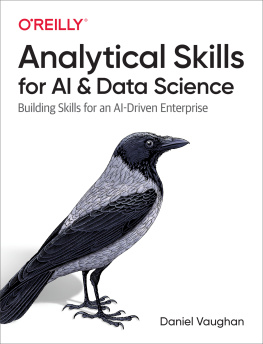

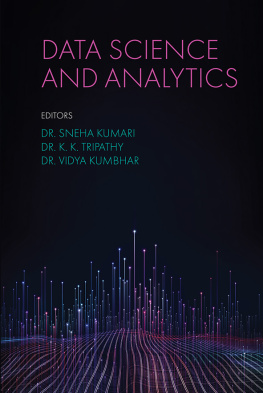

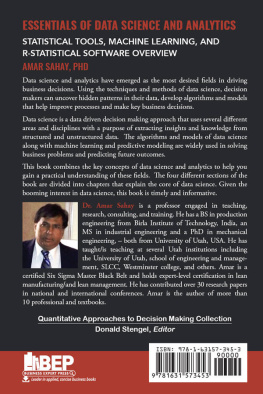

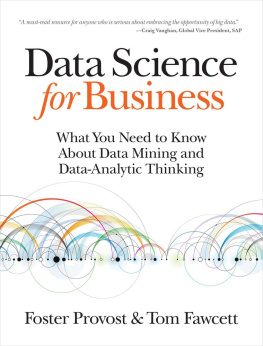
![Thomas W. Miller [Thomas W. Miller] - Web and Network Data Science: Modeling Techniques in Predictive Analytics](/uploads/posts/book/119619/thumbs/thomas-w-miller-thomas-w-miller-web-and.jpg)


